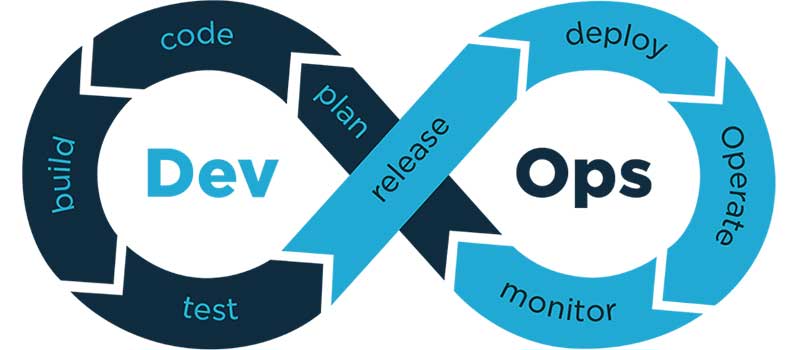DevOps Training Course Broucher & Syllabus

DevOps Overview
Why KeenSmartz?
DevOps Training course objectives
Course Duration
40 Hours of Instructor Led Online Classroom Training
Who Can Attend
Course Contents
Module 1 – Overview of DevOps
Objectives:
After completing this module, you should be able to understand:
Topics Covered:
Module 2 – Managing Source Code, Version Control – Git and GitHub
Goal: In this module, you will learn what is Source Control Management and the functionalities of Git and Github.
Objectives:
Topics Covered:
Hands On:
Git Installation, Git Common Commands, Working with Remote Repository, Branching and Merging, Stashing, Rebasing, Reverting and Resetting, Show the various git commands to push and pull a repository, from GitHub, Branching and Merging, Merge Conflicts
Module 3 – Understanding and using Build tools
Goal: In this module, you can learn how to build an appropriate delivery pipeline and perform test automation on it.
Objectives:
Topics Covered:
Hands On: Creating simple Maven project and perform unit test and resolve dependencies, Configuring Maven
Module 4 – Continuous Integration using Jenkins
Goal: In this module, You will know how to perform Continuous Integration with the help of Maven build tool and Jenkins by creating deployment pipelines using Jenkins.
Objectives:
Topics Covered:
Hands On: Installing and Configuring Jenkins, Create pipeline view using DevCompile and QAUnitTest, Adding Slave node in Jenkins, Build Pipeline project using Groovy script, Creating a build using Jenkins, Integrating with Jenkins, Working with Jenkins Pipelines
Module 5 – Configuration Management Using Ansible
Goal: To Understand how to manage and configure your infrastructure using Ansible.
Objectives:
Topics Covered:
Hands On: Write Ansible playbooks for Configuration Management, Ad-Hoc Commands, Running a Simple Playbook, Using Variables and handlers, Using Ansible Roles
Module 6 – Containerization using Docker Part – I
Goal: This module aims to introduce you about the core concepts and technology behind Docker and containers.
Objectives:
Topics Covered:
Hands On: Installing Docker in EC2, Starting Containers in Different Modes, Docker CLI Commands, Port Binding, Writing a Docker file to Create an Image, Create Docker Image, Manage Containers, Create Images from Containers
Module 7 – Containerization using Docker Part – II
Goal: Learn more advance concepts of Docker. Learn how to use Docker Hub registry, deploy a multi-tier application using Docker Compose, and create a swarm cluster.
Objectives:
Topics Covered:
Hands On: Setting up Docker Hub, Docker Volumes, Push images to Docker Hub, Docker Compose, Installing a Multi-Container Application using Compose, Running Docker in Swarm Mode, Building Images using Docker File, Creating multi-containers using Docker Compose, Creating User-Defined Networks, Working with Docker Swarm
Module 8 – Orchestration using Kubernetes Part – I
Goal: In this module, you will understand concepts of Container Orchestration and Basic of container management using Kubernetes. You will also learn how to manage multiple Docker Hosts using Kubernetes Orchestration.
Objectives:
Topics Covered:
Hands On: Installing Kubernetes, Using Kubectl Common Commands, Creating Pods, Deployments, Daemon Sets, Rolling-update and Rollbacks, Scaling in Kubernetes, Working with Jobs, Using Replica Sets & Rolling Updates, Scheduling the applications on the container
Module 9 – Orchestration using Kubernetes Part – II
Goal: To learn and deploy different service discovery mechanisms, utilize Volumes for persistent storage and deploy StatefulSets for Stateful applications.
Objectives:
Topics Covered:
Hands On: Deploying Services, Persistent Volumes and Persistent Volume Claims, StatefulSets, ConfigMaps and Secrets, Helm Charts
Module 10 – Continuous Monitoring using Nagios
Goal: Learn how to continuously monitor your tasks using various plugins and implementing Nagios Commands
Objectives:
Topics Covered:
Hands On: Installing Nagios, Monitoring of different servers using Nagios
Module 11 – Monitoring using Prometheus and Grafana
Goal: To understand how to collect, monitor, and visualize data using Prometheus and Grafana.
Objectives:
Topics Covered:
Hands On: Monitoring using Prometheus, Alerting using Prometheus, Visualization with Grafana Dashboards, Monitoring a Pipeline
Module 12 – Understand Cloud, AWS DevOps Services, DevOps on Cloud
Goal: To understand cloud computing and various cloud services and service providers. Also get an overview of how to implement DevOps using AWS.
